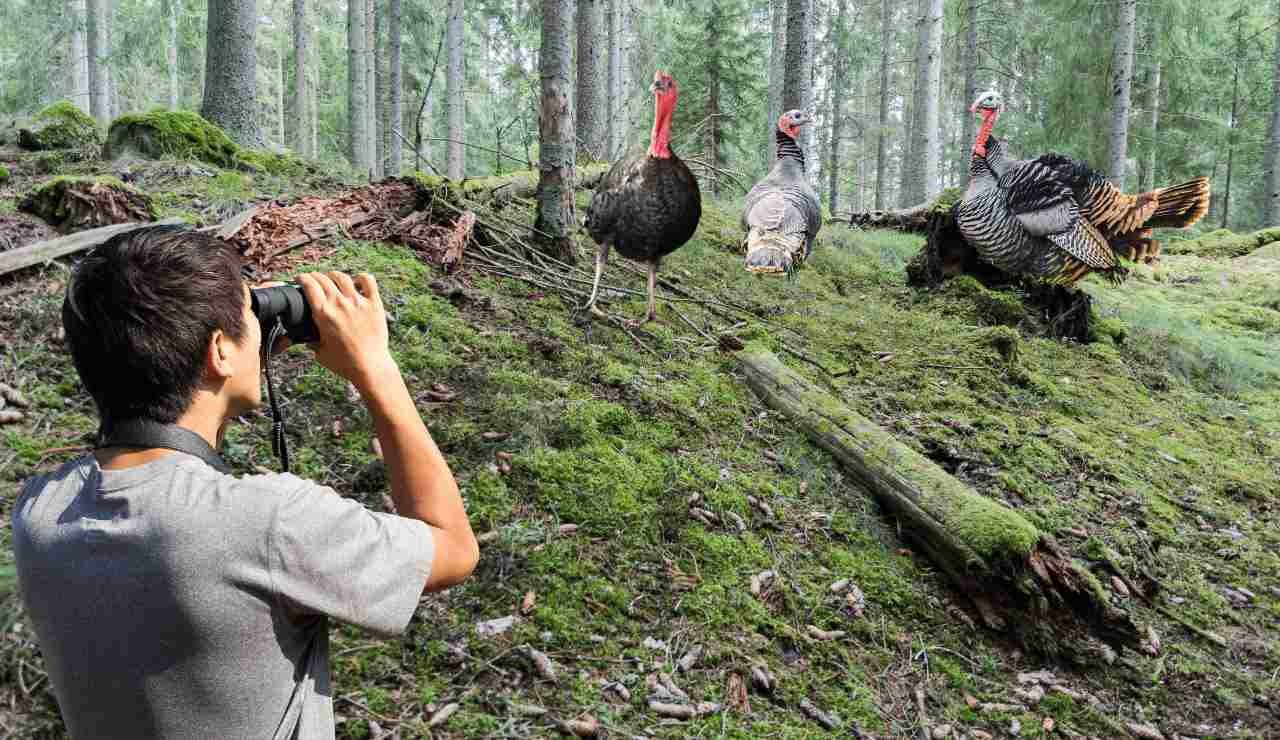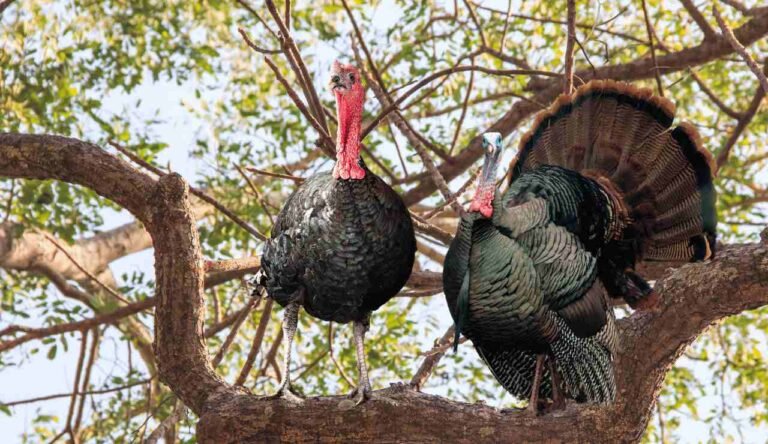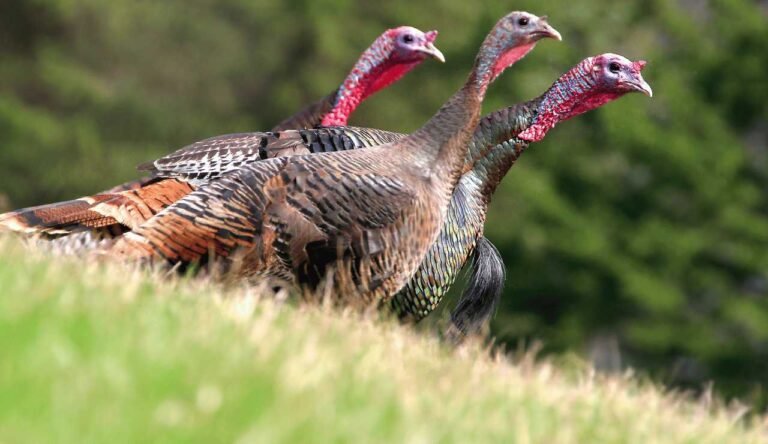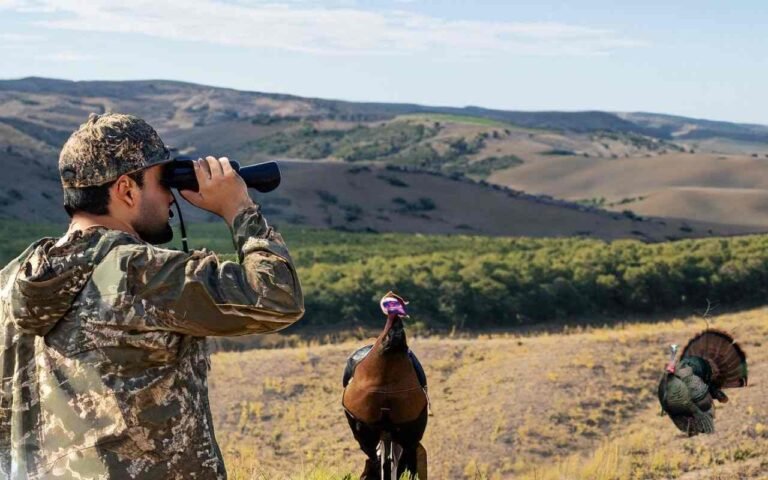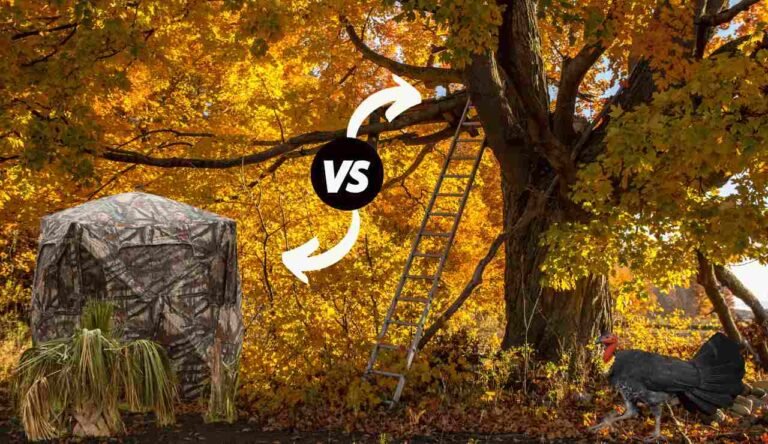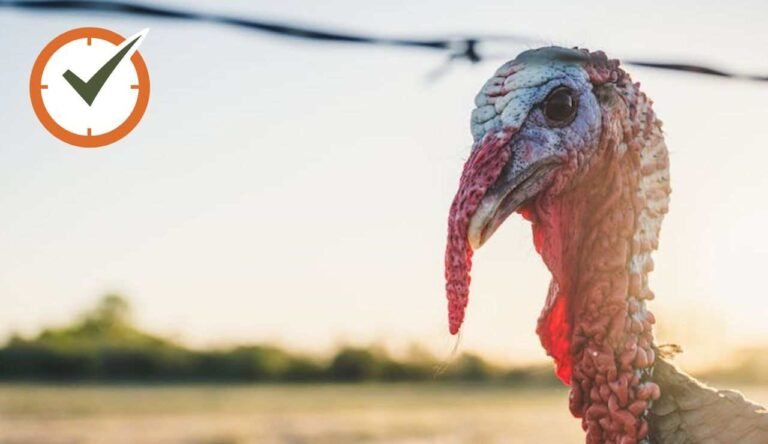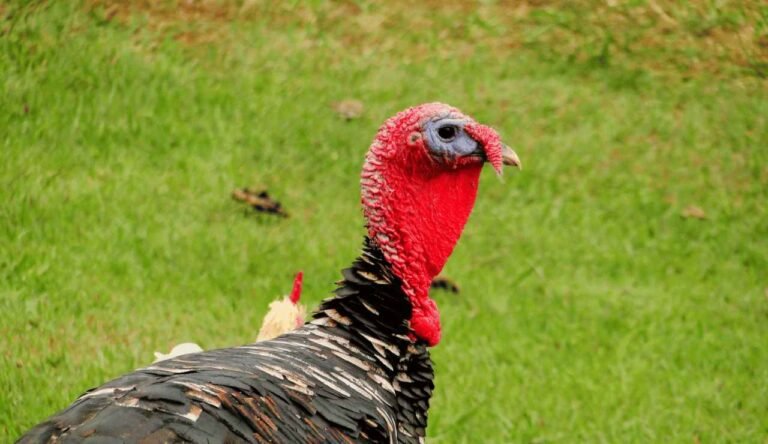Locating Turkeys: Where to Find Wild Turkeys? [Discover the Best Places to Search Wild Turkeys]
It will be interesting to both hunters and nature enthusiasts to learn where to look for wild turkeys and where to seek them. Due to their size and impressive look, wild turkeys are a well-liked game species, but locating them may be challenging. Understanding turkeys’ habits, food sources, and habitat preferences can help you hunt them successfully. Hunters may improve their odds of finding and shooting down wild turkeys by considering these things.
Locating Turkeys
In many areas of the United States, wild turkey sightings are frequent and may be found in various environments. The likelihood of finding them varies depending on the location, however. The following advice can help you locate wild turkeys:
| Habitat | Best Areas |
|---|---|
| Wooded areas | Forests, woodlands, and swamps |
| Near water | Streams, rivers, and lakes |
| Edge habitats | Areas where two different habitats meet, such as a forest and a field |
| Agricultural areas | Farms and ranches |
Wooded areas: First of all, wild turkeys like forested environments. They thrive in woody areas with both open and covered areas, such as marshes, woods, and forests. You could see some turkeys if you search for locations with a mixture of both.
Near water: Another consideration is that wild turkeys congregate close to water sources. To enhance your chances of seeing some turkeys, travel to streams, rivers, and lakes, as they need water for drinking, bathing, and dust bathing.
Edge habitats: Turkeys also like “edge habitats,” regions where two distinct habitat types converge. Turkeys, for instance, may be present where a field and a woodland intersect. This kind of environment is perfect for turkeys to live in since it offers them a choice of food and shelter alternatives.
Agricultural areas: Be on the lookout for wild turkeys if you’re in an agricultural region. They like munching on insects that they find near farms and ranches and crops like maize and soybeans.
You may find wild turkeys in woodland regions, close to water sources, edge habitats, and agricultural areas. To find turkeys, look for clues such as footprints, droppings, roosting trees, and dust-bathing locations. Be patient, walk slowly, and utilize binoculars to improve your chances of discovering these gorgeous birds. Now that you know where to seek wild turkeys, let’s discuss what to look for. These items will aid you in identifying turkeys.

What to Look For When Searching for Wild Turkeys?
There are a few things you may look for to assist you in locating wild turkeys while you’re out looking for them. These consist of the following:
Droppings and tracks: There are several clues that wild turkeys leave behind that might be used to locate them. Look for their footprints in the sand and droppings on the ground.
Roosting trees: At night, wild turkeys roost in trees. Locate strong, huge trees that are situated in wide spaces.
Dust-filled spaces: Wild turkeys like taking dust baths because they keep their feathers healthy and parasite-free. Look for bare patches of sand or soil that plants surround.
Callas: During the spring mating season, male turkeys, known as toms, produce a loud call. This cry, known as a “gobble,” is audible from a great distance.
Tips for Locating Wild Turkeys
Here are some pointers for seeing wild turkeys:
- Go early in the day or late at night. The morning and evening are when wild turkeys are the busiest. They are most likely to be eating and wandering about at this time.
- Move gently and in silence. Being quiet and moving slowly while looking for wild turkeys is vital since they are easily startled.
- Use binoculars. You can locate distant turkeys with the use of binoculars.
- Be patient and keep searching since discovering wild turkeys could take some time.
Wild Turkey Habitat Preferences
All in North America, wild turkeys may be found in various environments. Hunters and wildlife enthusiasts may spot them more successfully by knowing where they like to live. The following table lists the many habitat types where wild turkeys may be found, along with some information about them:
| Habitat Type | Characteristics |
|---|---|
| Forests | Turkeys like mature, diverse woods. They roost in trees and eat and shelter in the understory. |
| Wooded Swamps | Turkeys like hardwood swamps. They eat and drink in swamps and hide under thick cover. |
| Grasslands and Agricultural Fields | Turkeys eat grass and pastures. Poults need these settings in summer when they eat mostly insects. |
| Open Forests | Turkeys use mixed-tree and grass woodlands. Turkeys may wander freely in these settings and see predators. |
| Abandoned Fields | Turkeys may thrive in long-abandoned fields. Turkeys eat and shelter on grasses and forbs in these areas. |
Hunters and wildlife enthusiasts should search for locations with various trees, understory plants, grasses, and forbs to find possible turkey habitats. The borders of fields or woodland openings are other locations that turkeys choose because they have clear sightlines and adequate vision to notice predators. Hunters may also search for locations with scratch marks or droppings on the ground, which indicate that turkeys have recently used the area.
Hunters and wildlife enthusiasts may increase their chances of finding wild turkeys by learning about their preferred habitats.
Wild turkey food sources
| Food Source | Description |
|---|---|
| Acorns | Hard mast like acorns and beechnuts are preferred food sources for turkeys during the fall. |
| Beechnuts | Hard mast like acorns and beechnuts are preferred food sources for turkeys during the fall. |
| Hickory nuts | They forage frequently and will eat many different things, including hickory nuts. |
| Berries | Berries from various low-lying shrubs and bushes, wild grapes, and crabapples. |
| Wild grapes | Berries from various low-lying shrubs and bushes, wild grapes, and crabapples. |
| Crabapples | Berries from various low-lying shrubs and bushes, wild grapes, and crabapples. |
| Seeds | Seeds and grains, including spilled birdseed or corn and wheat in agricultural fields. |
| Corn | Seeds and grains, including spilled birdseed or corn and wheat in agricultural fields. |
| Wheat | Seeds and grains, including spilled birdseed or corn and wheat in agricultural fields. |
| Insects | Assorted insects, especially grasshoppers, and caterpillars |
| Reptile | Small reptiles, including lizards and snakes. |
| Green plant food | Green plant food and foliage, such as buds, leaves, tubers, roots, bulbs, and cacti |
| Forbs | Forbs like wild clover, sunflowers, milkweed, and ferns are a popular food source for many game animals, including turkey |
Time of Year and Turkey Behavior
| Season | Spring | Summer | Fall | Winter |
|---|---|---|---|---|
| Turkey Behavior | Toms are gobble-crazy and strutting their stuff to attract hens. | Hens are nesting and raising poults. | Toms are starting to gobble again as they prepare for the winter. | Turkeys are more difficult to find in the winter, but they can still be hunted. |
| How to Hunt | Hunt early in the morning or late in the evening, when turkeys are most active. | Hunt during the early morning or evening, when turkeys are feeding. | Hunt early in the morning or late in the evening, when turkeys are most active. | Hunt during the early morning or late in the evening, when turkeys are most active. |
| How to Locate | Listen for gobbling and look for strutting toms. | Look for hens and poults in fields and meadows. | Listen for gobbling and look for toms feeding in fields and meadows. | Look for turkeys feeding in fields and meadows. |
Public and Private Lands
Both publicly accessible areas and privately owned properties may provide successful wild turkey hunting grounds. Here is a comparison of public and private hunting areas, including advantages and disadvantages, as well as how to get there:
| Category | Public Lands | Private Lands |
|---|---|---|
| Availability | Often widely available and accessible to the public | Restricted to the landowner's discretion |
| Pressure | Can be heavily pressured due to a large number of hunters | May have less hunting pressure due to limited access |
| Cost | Generally free or low cost | May require payment or a lease agreement |
| Habitat | May offer a variety of habitats and food sources | Habitat quality can vary depending on land management practices |
| Success rates | Can be lower due to hunting pressure and competition | May have higher success rates due to less hunting pressure |
| Access | Accessible through state websites or mapping apps like onX or Huntstand | Permission required from the landowner or manager |
Public lands have the advantage of being publicly accessible and available, sometimes at free or cheap cost. They could also provide wild turkeys with various habitats and food sources. Contrarily, private properties may have reduced hunting pressure because of restricted access, which might lead to increased success rates.
Each, however, has disadvantages as well. Due to the high strain placed on public lands by hunters, hunting may become more difficult. Private lands need the owner’s or manager’s approval, which may be challenging and include money or a leasing arrangement. The owner’s land management techniques may also affect the habitat quality of the privately owned property.
You may look for nearby places for public lands on state websites or using mapping applications like onX or Huntstand. You must speak with the land management or owner and request permission to hunt on private property. Additionally, several governments allow access to hunting possibilities on publicly accessible private property via access programs.
Overall, both public and private areas may be successful wild turkey hunting grounds, so before choosing where to hunt, weighing the advantages and disadvantages of each is important.
Conclusion
In conclusion, locating wild turkeys might be difficult, but several tools and resources are available to assist hunters in finding these elusive birds. Turkey hunting is permitted on public and private grounds, each with advantages and disadvantages. Private lands may have less hunting pressure but need permission from landowners, while public lands may have more intense hunting but provide wide areas to explore. Hunting spots may be found via satellite imagery, internet mapping tools, and contacting state wildlife organizations. Hunting rules and regulations must be followed, and hunters must respect public and private grounds.
A successful hunting season depends on knowing where to look for wild turkeys. Hunters may improve their odds of a successful hunt by investigating suitable hunting places, learning about the behaviors and environment of wild turkeys, and using efficient hunting techniques. The survival of wild turkey populations and preservation of the hunting experience for future generations depends on environmental stewardship and adherence to hunting laws.
Frequently asked questions on locating a wild turkey
Where to find wild turkeys?
In the United States and Canada, wild turkey populations may be discovered in various forest environments, including oak forests, marshes, and deserts. The American wild turkey is distributed across the continental United States, Hawaii, and several Canadian provinces, with five distinct subspecies exhibiting unique physical and behavioral characteristics. Wild turkeys typically inhabit a mix of wooded areas and open clearings in their preferred habitat, as acorns are a primary diet component. They are adaptable to various settings, including marshes, mountains, plains, and deserts. The Gould’s wild turkey subspecies, which has a small population restricted to Arizona, New Mexico, and northern Mexico, is one of the five subspecies.
What are some general habitat requirements for wild turkeys?
Trees provide food, places to rest and hide during the day, and, most significantly, places to roost at night. In addition to providing food for adults, grasses are crucial for poults because they create a habitat where they may hunt for insects. Both directly and indirectly, moisture is essential to the survival of wild turkeys.
How can I locate wild turkeys?
You may survey the region, look at maps, examine wild turkeys’ behaviors and physical traits, and learn about their nutrition and environmental preferences. They often hunt beside roadsides and spend the night in big, old trees. Thus, they need refuge like thick brush and established flora. Their diverse diet comprises acorns, beechnuts, fruits, seeds, and small animals.
What is the difference between Male and female Turkey?
There are numerous physical differences between male and female turkeys. Most of the time, male turkeys are bigger than females and have more vivid and brilliant feathers, including iridescent feathers on their wings and tail. Additionally, they have neck and head caruncles that are more noticeable, longer snoods, bigger wattles, and longer noses. Female turkeys may have lesser spurs; only male turkeys have beards and huge spurs. It is crucial to remember that these distinctions may not always be reliable, and it could still be difficult to identify a turkey’s gender accurately.
How to find turkeys on public land?
To locate turkeys on public property, scout the region for open fields, woodlands, and water sources where they may be foraging, roosting, and drinking. Observe tracks, feathers, and bird droppings as they may aid in locating the birds. Calls, such as slate or push-button calls, can attract turkeys, but it’s essential to approach gobblers before calling and practice calling beforehand. Be patient since turkeys may be wary of people, particularly on public lands where they might have already experienced hunters. Late mornings and afternoons are typically busy times for turkeys. Look for underutilized areas on small parcels of public property that may contain turkeys that other hunters need to look into. Combining these tactics and being persistent can increase the odds of locating turkeys on public lands.
How to locate turkeys in the evening?
To find turkeys during evening hunts, hunters can use various techniques, such as studying the landscape, listening for gobbles, searching for roosting areas, using decoys, and being mobile. Before starting the hunt, studying turkey behavior and looking for signs such as scratching and droppings is important. Since turkeys are less active in the evening, hunters should approach slowly and be patient. Hunters should approach the bird quietly if a gobble is heard at dusk. Once a roosting place is found, setting up an ambush position or blind nearby can also be effective. Using decoys sparingly and calling strategically can also attract turkeys. Overall, hunters should remain alert, persistent, and adaptable to increase their chances of success.
How to locate turkeys in the morning?
Hunters can use various techniques to make turkey hunting in the morning easier. One effective approach is to locate where turkeys roost at night and wait for them to fly down in the morning. Another strategy is to use locator sounds like owl or crow calls to surprise a tom turkey into gobbling. Additionally, hunters can search for fresh footprints in the soil or snow to locate turkeys early in the day, and decoys can be utilized to draw them to a particular location. By moving slowly and quietly towards the turkey, using cover to conceal movements, and staying downwind to avoid detection, hunters may increase their chances of a successful harvest. By following these suggestions and techniques, hunters may improve their chances of locating and hunting turkeys early in the morning.
How to find turkeys in the fall?
In the fall, hunting turkeys can be challenging but rewarding. To locate turkeys, hunters may search for signs of recent activity, such as droppings and tracks. Travel routes between the roost and food sources may also be good areas to target. Using appropriate calls, such as those that imitate juvenile gobblers, can increase the likelihood of success. Maintaining a safe distance from the roost area and using a blind to conceal movements is important. In addition, understanding your weapon and using broadheads specifically designed for turkey hunting is crucial for a successful hunt. By utilizing these techniques, hunters can improve their chances of finding and harvesting a turkey during the autumn hunting season.
How to find turkeys in spring?
To prepare for spring turkey hunting, it is recommended to first inspect the area for evidence of turkey activity, such as droppings, tracks, and feathers, and to identify regions with abundant food sources. Turkeys may be lured to your location by utilizing lifelike turkey decoys and listening for their calls at dawn and dusk in areas where they have been spotted. Turkeys may also be found in clear-cuts or open, bright agricultural fields adjacent to roosting woodlots, which may be identified using aerial imaging. Before hunting, follow all safety, legal, and permitting requirements.
- Florida Turkey Season 2025-2026: Latest Hunting Dates, Licenses & Rules Available! - October 16, 2025
- Delaware Turkey Season 2025-2026: [Everything You Need to Know Dates, Regulations, Bags & More] - October 16, 2025
- Connecticut Turkey Season 2025-2026: [Dates, Regulations, Bag Limits & More] - October 16, 2025
